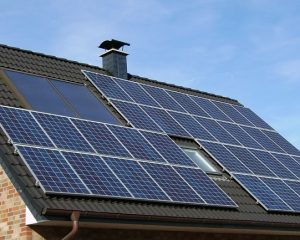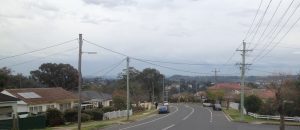
We don’t need statistics or surveys to tell us that we Australians love solar power.
Wherever you go in the south west Sydney region solar panels on roofs of houses seem to be multiplying like mushrooms.
Especially in new housing estates, but owners of older homes are getting in on the act as well.
And with power prices heading ever upwards, no wonder.
According to new figures, this is happening across the country.
Australians are now generating enough power from the sun to light up nearly all the households in Melbourne, according to the latest industry analysis.
Figures released last week show there is now 6 gigawatts (GW) of solar power installed across the country, with the sunny state of Queensland leading the charge with more than 1.7GW.
This means Australia is now generating enough solar power to meet the electricity needs of 1.3 million average households – or close to all homes in the City of Melbourne.
In fact, solar is so popular in some towns and suburbs that households without it are in the minority.
For example, two thirds of all households in Baldvis in Western Australia and Elimbah in Queensland now have rooftop solar.
Australian Photovoltaic Institute chair Dr Renate Egan says Australian homeowners, commercial businesses and large scale solar farms had all contributed to an extra 1GW of solar being added to the grid over the past year.
“Solar power now makes up 11 percent of our country’s total electricity generation capacity with more solar added to the system in 2016 than any other fuel type,’’ Dr Egan said.
“These numbers are so big they can be difficult to picture, but to put 6GW into perspective – that is twice the capacity of Australia’s largest coal fired power station, Loy Yang in Victoria.”
Solar analyst Warwick Johnston, who is managing director of SunWiz, said a breakdown of data from the Clean Energy Regulator showed that Queensland, NSW and, new addition, Western Australia were leading the charge when it comes to new solar installations.
“Queensland is far and away the number one state for solar installation – earning its moniker of the Sunshine State,’’ Mr Johnston said.
“NSW follows close behind, both in the total number of installations as well as how quickly new solar installations are going in.
“The biggest change has been Western Australia leapfrogging Victoria into third place when it comes to the number of new solar installations.”
Mr Johnston said solar installations numbers had risen quickly at the end of 2016, and in the first quarter of this year the industry experienced one of its strongest ever quarters.
[social_quote duplicate=”no” align=”default”]”With batteries now readily available on the market, many people are taking this opportunity to install both solar and batteries – or to upgrade the size of their existing solar systems.[/social_quote]
“The price of solar has dropped low enough, and power prices are rising high enough, for this to make economic sense for many commercial operators, too.”
As of April 2017 there was a total of 1.67 million PV installations in Australia, covering 21 percent of suitable rooftops, which is the highest penetration of rooftop solar in the world.
In total, these solar installations collectively generate 8400 GW/hr of energy each year, which meets approximately 3.3 percent of Australian demand.

